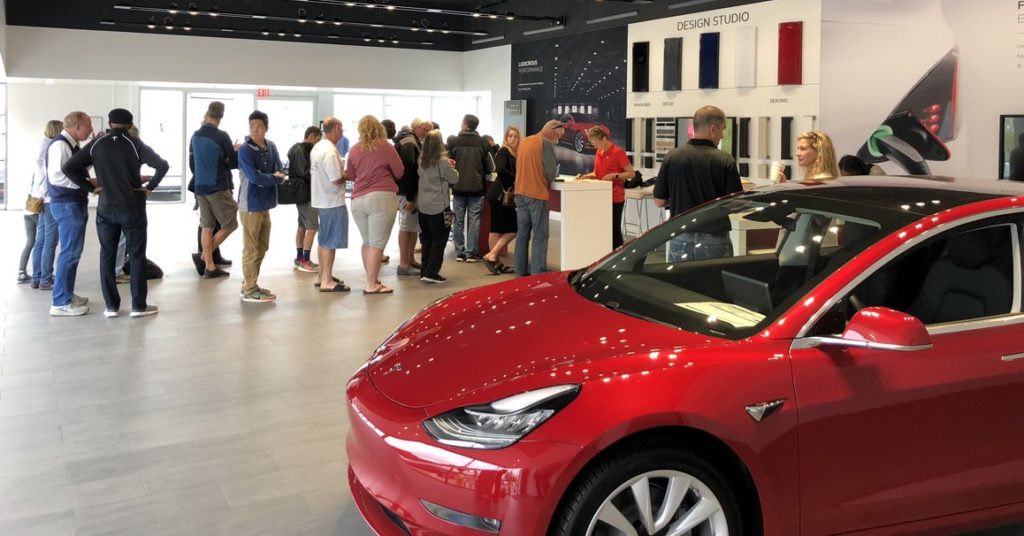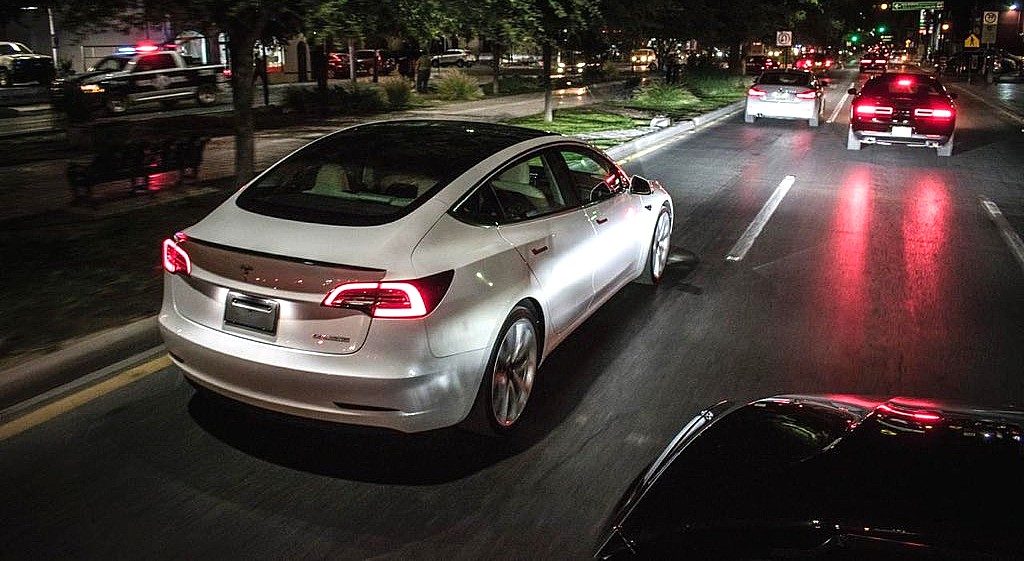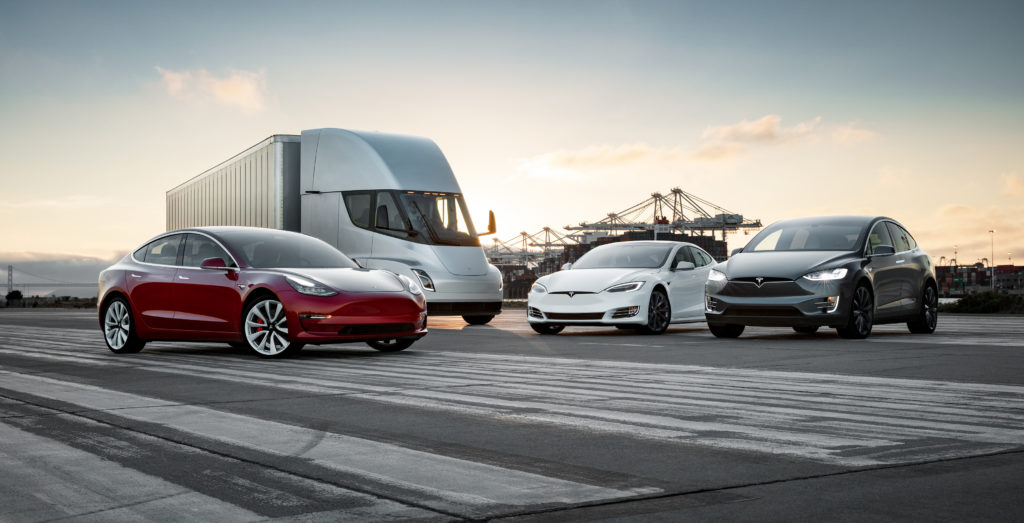Tesla’s (NASDAQ:TSLA) avoidance of traditional advertising initiatives is one of the most recognizable things about the company, yet it is one that has been questioned several times over the years by Wall Street analysts, investors and even avid fans. Yet, despite these questions, CEO Elon Musk’s answer has always been the same: Tesla does not do traditional advertising. Musk emphasized this point during the last earnings call too, stating that if Tesla would do some form of marketing, it would be strictly informational in nature.
“What we’re seeing is that word of mouth is more than enough to drive our demand in excess of production. We have no plans to advertise at this time. At some point in the future, we may do advertising not in the traditional sense but more to just inform people and make sure they are aware of the product, but not engage in the typical trickery that is commonplace in advertising,” Musk said.
In a conversation with Teslarati, investor and economist @Incentives101 explained that if one looks at Tesla’s word-of-mouth strategy from a mathematical perspective, it would seem that Elon Musk’s stern stance against traditional advertising may actually be well justified. Considering the manner that Tesla has been growing so far, the economist noted that “Elon is probably right. They don’t need advertisement and probably will never need it.” The following sections explains this point.

How Customers Learn About Tesla
There are generally three ways a new customer could learn about Tesla and its products: 1)Elon’s/Tesla goodwill, 2) customers’ own research, or 3) through an existing Tesla owner. Tesla relies heavily on current owners spreading the word and converting people they know into new electric car owners. Most people call this strategy the “Network Effect,” but the economist states that this is a misinterpretation.
“The Network Effect is technically applied to how a product increases its value from a network. The telephone is the most obvious example. One or two telephones in the world are useless, but the more there, are the more useful they become. In a way, you have to treat this like a disease. If you analyze (Tesla’s) strategy, you not only need information to flow. You need the information that changed hands to have an effect. In this case, the purchase of another Tesla. The most similar models to this strategy out there are how diseases spread,” the investor said.
These mathematical models try to predict how a disease will be spread considering different assumptions and variables. Among those variables are the number of susceptible individuals, of infected people and of recovered people, as well as the rate of contagion. For purposes of this illustration, information is equal to a virus and the main variables are the number of people that want to buy a car in that period of time within a target price range or TCO (susceptible individuals), the number of owners at the time (infected people), and the average number of people that an owner would convert in that period of time (contagion). This will be referred to in this article as the ‘T’ variable.

How Tesla spreads
The investor explains this further in the following statement. “The easiest way to understand this is the following. Imagine you’re looking at a decision tree. Each node is a new person with a Tesla in a period of time and how many nodes come out of that person is our ‘T.’ In each period of time that you’d want to measure, there are more assumptions that would need to be made. For example, an owner never ‘recovers’ so not only they ‘infect’ people but they will be contagious in perpetuity.
“Let’s analyze the spectrum of possible solutions. If T>=1, it would mean that information is flowing very efficiently and it will behave exponentially even if the time it takes for an owner to spread enough information to convert someone is relatively high. You need to consider that today, there are more than half a million owners. The faster the person transmits the ‘virus,’ the better,” he said.
There is no way to approximate these variables with the information available to us today. But recently, Tom Randall from Bloomberg released the findings of a study involving 5,000 Model 3 owners. According to the study’s results, 99% of Model 3 owners are pretty much satisfied with the vehicle, and they are willing to recommend the electric car to friends and family. A number of assumptions could be drawn from these results, as per the investor.
“If you consider what would be the worst scenario for Tesla, it would mean a very long time for contagion to spread, with the ‘T’ variable being very close to zero. But with the information provided in the Bloomberg report, there is a very high probability that ‘T’ is not close to zero at all. Instead, there’s a good chance that ‘T’ is probably very close to 1,” the economist said.

Growing Without Traditional Advertising
These assumptions would mean that Tesla can continue to grow without engaging in traditional advertising. Looking at Tesla’s history, we can see that this strategy or combination of strategies have worked. But is there an optimal time to have an information campaign? “It seems that the sooner, the better” the investor explained. “If you look at how this strategy functions, theoretically, the best time to have an information campaign is when they’ll have the least amount of owners and when they’ll increase production dramatically. So in theory this means in the next few months as Tesla continues to hit its stride with Model 3 and begin producing the Model Y, high volume vehicle that Elon Musk expects will outsell the Model S, X, and Model 3 combined. This doesn’t mean they need one, it just means it could be the best time,” he added.
It wouldn’t be accurate to assume that this strategy or combination of strategies is what creates demand. Any company could choose to have either this strategy or spend millions of dollars in advertising and demand wouldn’t necessarily go up or down. “Consumers need information to make decisions — it’s a very important factor — but demand is a function of several factors, particularly consumer preferences. Under perfect information, there is zero doubt demand for Tesla’s will rise as we explained in this note,” the investor noted.
“Tesla’s word-of-mouth strategy helps spread information, but if this product didn’t have a fundamental effect in consumers, it wouldn’t really matter. I’m confident that if banks or media had someone looking at this problem from the consumer side, we would never see a note about alleged ‘demand problems’ again. Tesla has never had a demand problem and data shows that they won’t face one. But they might face an information gap, particularly with how media misinforms consumers,” the economist said.
Disclosure: I have no ownership in shares of TSLA and have no plans to initiate any positions within 72 hours.

(adsbygoogle = window.adsbygoogle || []).push({});
<!–
–>
var disqus_shortname = «teslarati»;
var disqus_title = «Tesla’s word of mouth strategy in focus: Why Elon Musk’s owner-based initiative works»;
var disqus_url = «https://www.teslarati.com/tesla-tsla-elon-musk-word-of-mouth-strategy-explained/»;
var disqus_identifier = «teslarati-120822»;

